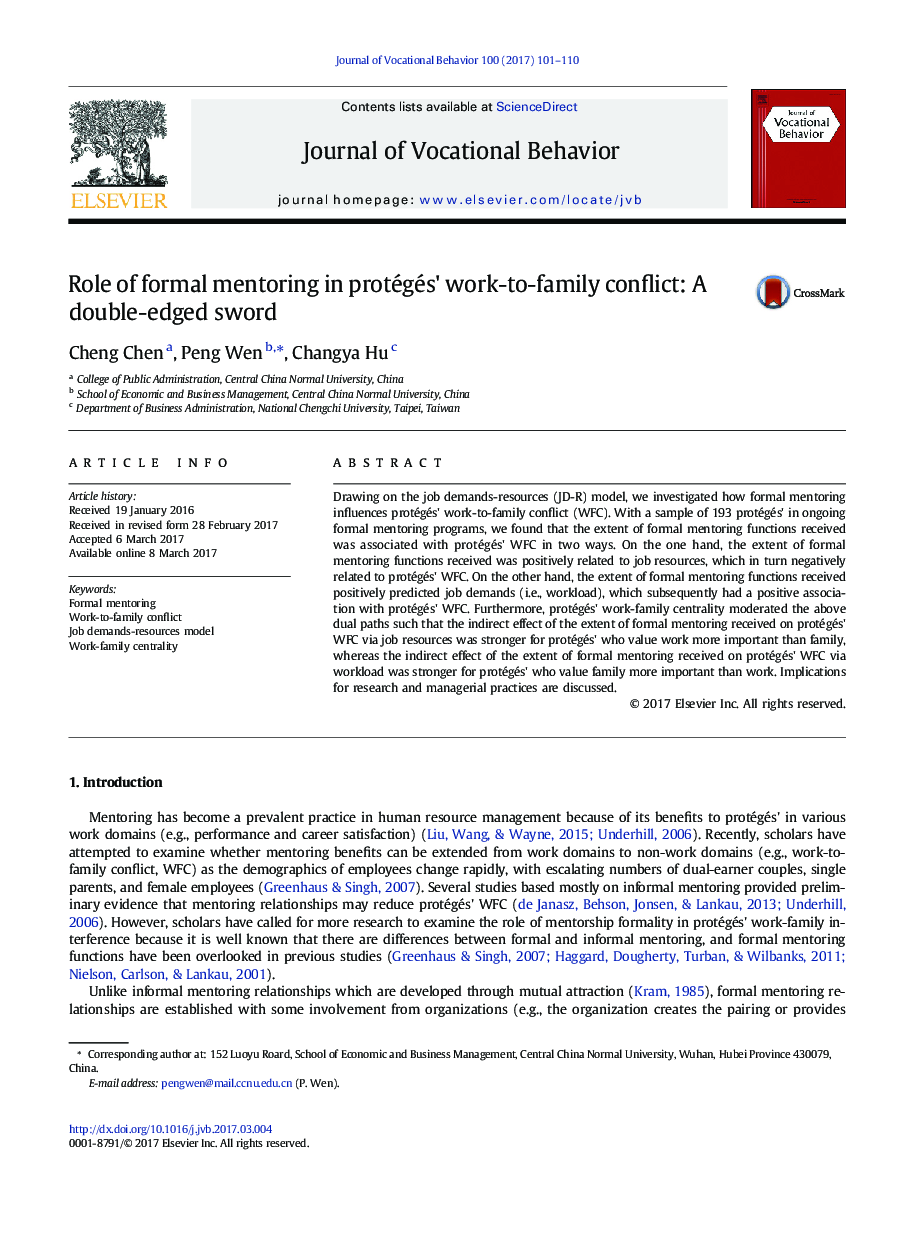| کد مقاله | کد نشریه | سال انتشار | مقاله انگلیسی | نسخه تمام متن |
|---|---|---|---|---|
| 5035120 | 1471800 | 2017 | 10 صفحه PDF | دانلود رایگان |
- Examining a dual-path effect of formal mentoring on protégés' WFC through the job demands-resources model
- Job resources negatively mediated the relationship between formal mentoring and protégés' WFC.
- Workload positively mediated the relationship between formal mentoring and protégés' WFC.
- Work-family centrality moderated the above two mediation effects.
Drawing on the job demands-resources (JD-R) model, we investigated how formal mentoring influences protégés' work-to-family conflict (WFC). With a sample of 193 protégés' in ongoing formal mentoring programs, we found that the extent of formal mentoring functions received was associated with protégés' WFC in two ways. On the one hand, the extent of formal mentoring functions received was positively related to job resources, which in turn negatively related to protégés' WFC. On the other hand, the extent of formal mentoring functions received positively predicted job demands (i.e., workload), which subsequently had a positive association with protégés' WFC. Furthermore, protégés' work-family centrality moderated the above dual paths such that the indirect effect of the extent of formal mentoring received on protégés' WFC via job resources was stronger for protégés' who value work more important than family, whereas the indirect effect of the extent of formal mentoring received on protégés' WFC via workload was stronger for protégés' who value family more important than work. Implications for research and managerial practices are discussed.
Journal: Journal of Vocational Behavior - Volume 100, June 2017, Pages 101-110
